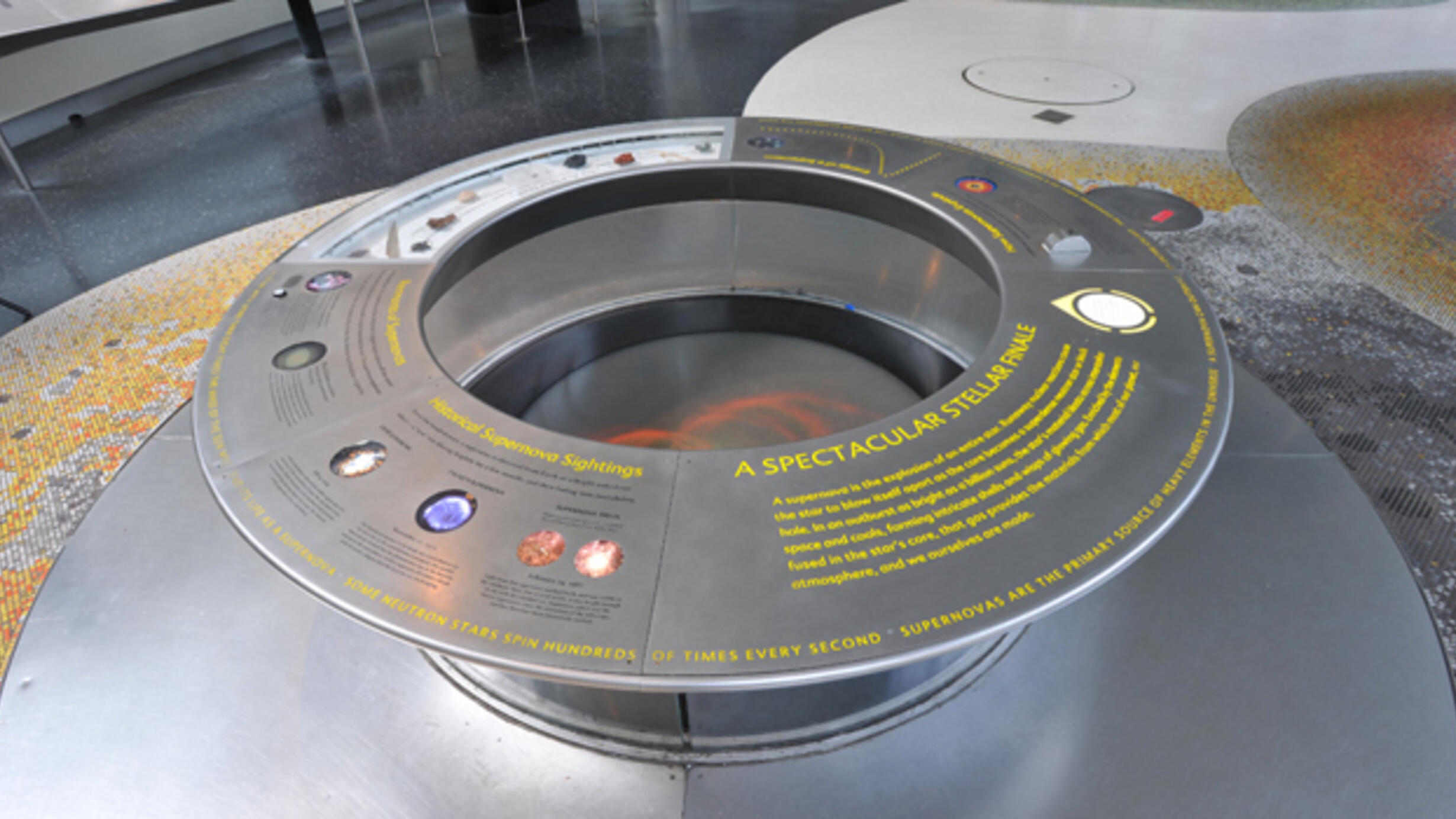A Spectacular Stellar Finale
Part of Hall of the Universe.
 AMNH/D. Finnin
AMNH/D. Finnin A supernova is the explosion of an entire star. Runaway nuclear reactions cause the star to blow itself apart as the core becomes a superdense neutron star or black hole. In an outburst as bright as a billion suns, the star’s material blasts across interstellar space and cools, forming intricate shells and wisps of glowing gas. Enriched by the elements fused in the stars core, that gas provides the materials from which most of our planet, our atmosphere, and we ourselves are made.
Remnants of Supernovas
In the explosion of a supernova, most of the star’s original mass is blown off into space. The remaining collapsed core is usually a superdense neutron star. The supernova explosion of a very massive star can create a black hole, the ultimate manifestation of gravity.
Neutron Star: A neutron star contains about the mass of the Sun compressed to the size of a city. Spinning neutron stars are generally observed as “pulsars.” As they rotate, a beam of radio emission sweeps across our view like a lighthouse beacon, producing precisely timed radio light pulses. Some pulsars spin hundreds of times every second.
Black Holes: Black holes are so dense that even light cannot escape their gravity. Thus, we cannot directly see black holes, but must infer their existence from nearby objects. In an “x-ray binary” system, matter pulled off a companion star settles into an accretion disk around a black hole. Collisions within the gas produce the high-energy x-rays that reveal the black hole’s presence.
Historical Supernova Sightings
Every few hundred years, a supernova is observed from Earth as a bright naked-eye object - a “new” star blazing brightly for a few months and then fading into invisibility.
Crab Supernova: July 4,1054
Chinese astronomers observed the sudden appearance of a “guest star” in the constellation Taurus. We now know it was a supernova. Native Americans in the Southwest left drawings on cave walls that also may depict this event. The remnant of this supernova is the Crab Nebula.
Tycho's Supernova: November 11, 1572
The Danish astronomer Tycho Brahe was astonished to see an extra star in the constellation Cassiopeia. His careful observations showed that the phenomenon was in the heavens and not in the atmosphere. Tycho’s supernova heralded a break with Aristotle’s dogma that the heavens are unchanging.
Supernova 1987A: February 24, 1987
Light from that supernova reached Earth, and was visible in the southern skies. For several weeks, it was bright enough to see with the unaided eye. Supernova 1987A was the closest supernova since the invention of the telescope and has therefore been intensively studied.
Supernova Examples
These nebulas are exploded stars flowing outward at millions of kilometers per hour, glowing with the light of superheated gas and radioactive decay.